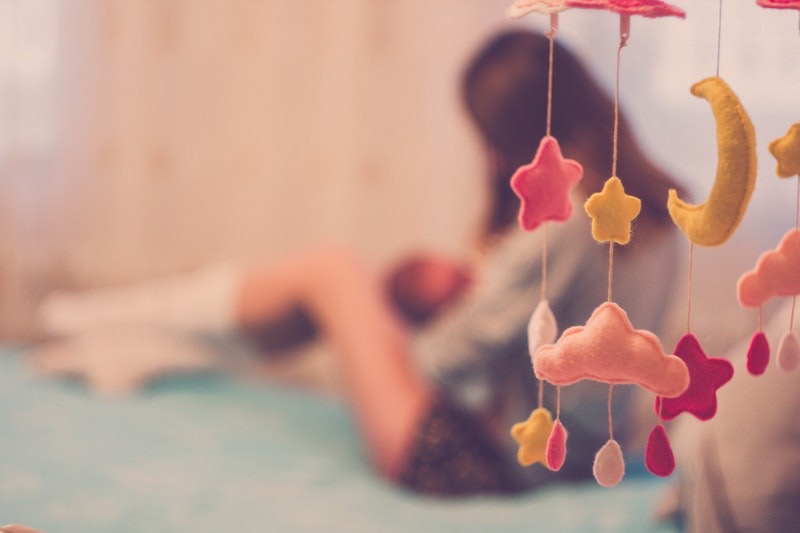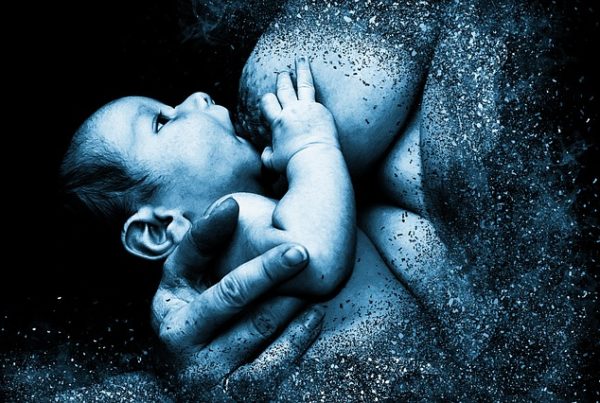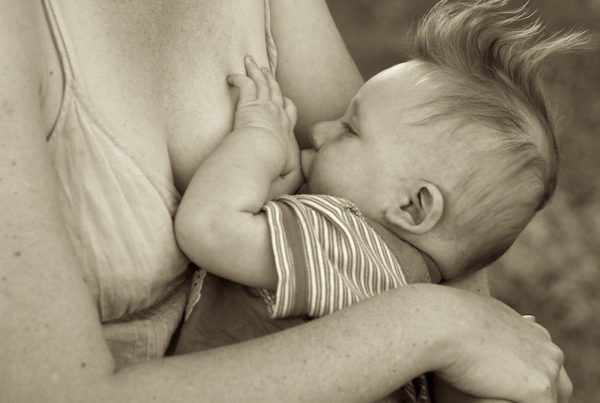
Disclaimer: I am not a doctor so I am not able to give medical advice about treating mastitis. The thoughts I am presenting reflect my own experiences and opinions. Please seek help from a doctor for your medical needs.
Becoming a mom to a new baby brings new experiences and obstacles. One obstacle that a breastfeeding mom might face is a breast infection called mastitis. Mastitis occurs when the milk ducts in your breast are not emptied completely after nursing. This can lead to an infection. It can also be caused from bacteria entering through cracks in your nipple from a bad latch. Mastitis is most likely to happen during the first few weeks of breastfeeding before your milk regulates to the supply and demand of your baby. Using the same position each time you nurse your baby may not empty your breast completely and can cause a duct to become blocked. Tight clothing, aka pre-pregnancy clothing, can put too much pressure on your breasts. Sleeping on your stomach, which I am guilty of, can cause mastitis as well. Being overly tired and stressed (hello-every new mom!) can lead to mastitis.
What it Feels Like to Have Mastitis
Mastitis usually only affects one breast. Your breast will be swollen and hot when touched. Your breast may have a red wedge shaped area that feels hard. You will have pain while nursing on that breast, especially during letdown. It should be less painful after nursing. You will have a fever that is accompanied by flu-like symptoms.
Tips for Treating Mastitis
You’ll need to see your doctor to diagnose mastitis and begin treatment. You’ll be prescribed an oral or cream antibiotic. Make sure you receive a prescription for an antibiotic that is safe for breastfeeding. Here are some tips to help you get through the worst parts while the medication is doing its job:
- Mastitis can mean that you need to slow down. Rest with your baby lying next to you to encourage frequent nursing to empty your breast.
- You can use cold packs over your breast between feedings and take Ibuprofen for pain and inflammation as well.
- You can use a disposable diaper as a compress over your breast before nursing or pumping to help milk let down and increase circulation. Fill the diaper with hot water and test on your arm so you don’t burn yourself. Put the diaper over your breast for a few minutes before nursing. Gently massage toward your nipple as you nurse to help push out clogged milk.
- Rest as much as possible and let others help you around the house.
- Wear loose clothing, drink plenty of water, and eat to strengthen your immune system. You can’t take care of your baby if you aren’t well.
- You can also use breast compressions when you baby is just sucking and not actively drinking.
- Nurse on the side with infection first but don’t neglect the other side. If it’s too painful to nurse on the infected side, hand express or pump to empty milk.
- Nurse in more than one position to fully drain your breast. A nursing position that you might not know about is dangle nursing. While your baby is lying on their back on a bed, you will nurse on your hands and knees over them, dangling. This position uses gravity in your favor to remove the clogged milk.
What to Expect When Treating Mastitis
Mastitis is unpleasant but treatable. Your breast will still feel bruised for about a week after beating mastitis. While it’s tempting to stop breastfeeding and use formula instead, nothing will be solved because you will still have the infection to treat. Untreated mastitis can lead to a breast abscess that will require surgical draining.
Following the tricks above will help you feel more comfortable while you heal from mastitis. You can get through this. One of the best pieces of advice I’ve heard was to never quit nursing on a bad day.



